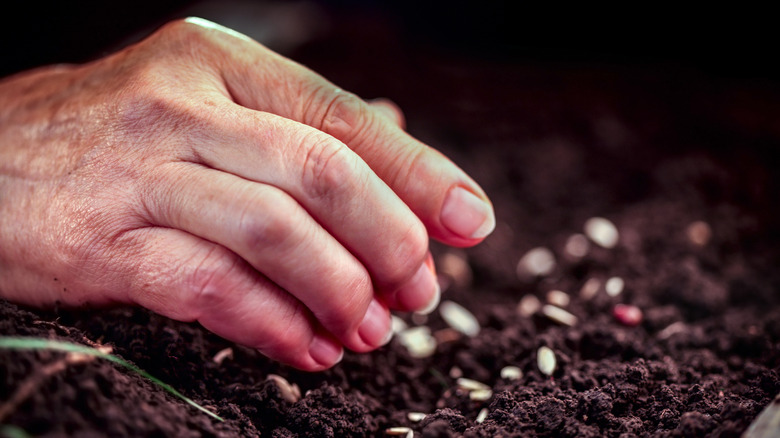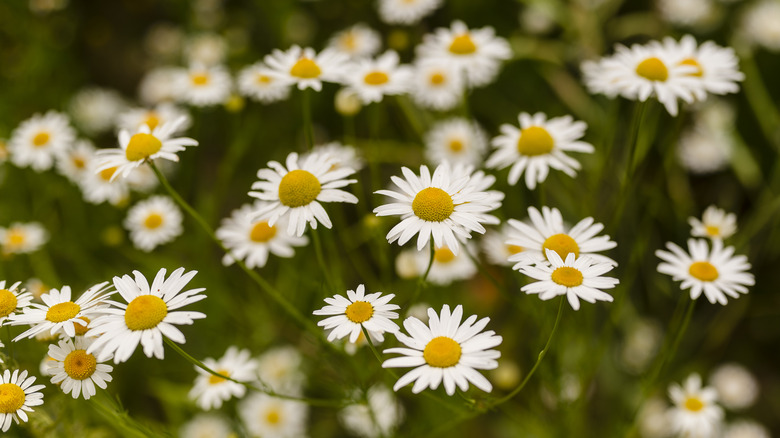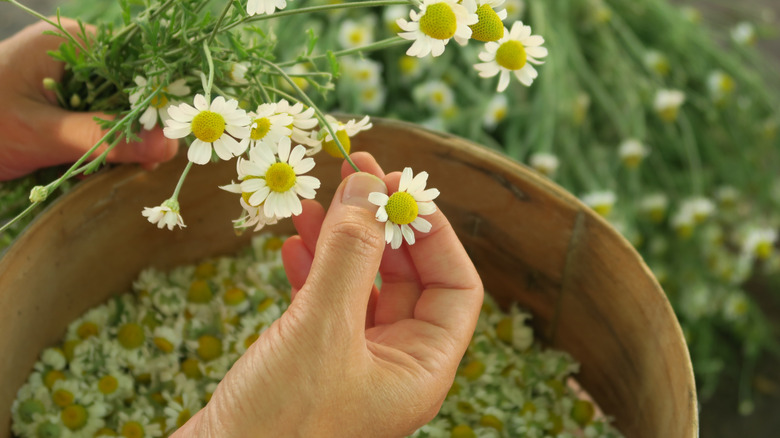The Beginner Friendly Flower You Can Easily Grow From Seed
Are you interested in growing your own herbal remedies, but you're not sure if the process would be too difficult or require more gardening experience? Growing chamomile from a tiny seed is actually pretty easy, making it an excellent starting point for any beginner gardener.
While both German chamomile (Matricaria chamomilla) and Roman chamomile (Chamaemelum nobile) share the same name, it's important to note that they are distinct species within the Asteraceae (daisy) family. This daisy-like flower has two varieties, each with different habits and uses. German chamomile is an annual plant known for its soothing flowers used in tea, and Roman chamomile is a perennial used as a fragrant groundcover or ornamental border. German chamomile is the plant that's most often started from seed because of its quick growth, but both varieties need a sunny spot and well-draining soil. German chamomile can be grown as an annual in USDA Zones 2 through 8, and Roman chamomile is a perennial that's hardy in Zones 4 through 10.
The differences between the two chamomiles mean the care they need will vary, but both of them have a lovely fragrance that gardeners appreciate. Planting chamomile seeds means you can grow an ingredient for a soothing cup of tea or have a sweetly scented patch in your yard.
Seed starting: Light, timing, and technique
There are some successful seed germination tricks for both varieties that depend on one important factor: light. Chamomile seeds, regardless of type, are light germinators, meaning they should not be buried beneath the soil. Instead of covering them, scatter the seeds across the top of the soil and firmly press them into the dirt. If you cover them completely with soil, they may not germinate.
To get a head start on the growing season, gardeners typically plant German chamomile indoors in flats four to six weeks before the final expected frost in their area. Germination happens quickly, often within two weeks. Roman chamomile seeds can be started at the same time in the spring, though some gardeners find that it's slower to establish from seed than German chamomile. Both varieties can be direct-sown once the soil is workable in spring, or you can sow them in the late fall to allow for natural cold stratification over the winter. Whether starting indoors or out, once the seedlings emerge, you need to keep the soil surface consistently moist until the plants are established.
Managing growth and harvesting
The care of the plants depends on which type you are growing. If you plant the annual German chamomile, you'll need to pay attention to spacing. Seedlings need to be thinned to at least 8 to 12 inches apart to prevent overcrowding. This spacing is important for air circulation and helps the plants grow into their natural mound shape. German chamomile readily reseeds itself, returning each year in many gardens. This variety grows tall, reaching 24 inches in height. Aside from its flowers being used for tea, German chamomile is beneficial as a companion plant for many types of vegetables, herbs, and trees because it's thought to improve the health and flavor of neighboring plants. It also attracts beneficial insects and has antifungal properties that can protect against certain plant diseases.
Roman chamomile is a perennial ground cover that spreads via runners, creating a dense, carpet-forming mat. This makes it an excellent choice for a lawn alternative or for planting along pathways. It can grow to a height of 12 inches, and while this variety will return every year, it's often propagated by cuttings or divisions since seed-grown patches can take longer to fill in.
Although the flowers from both varieties can be used for tea, German chamomile is used most often since it produces more blooms. The harvesting technique is the same for both: wait until the white petals are fully opened and lying flat or starting to slightly tilt backward from the yellow center. Use your fingers to gently pinch or snap the flower heads off the stem just below the base. Consistent picking of German chamomile encourages it to grow more flowers throughout the growing season.


